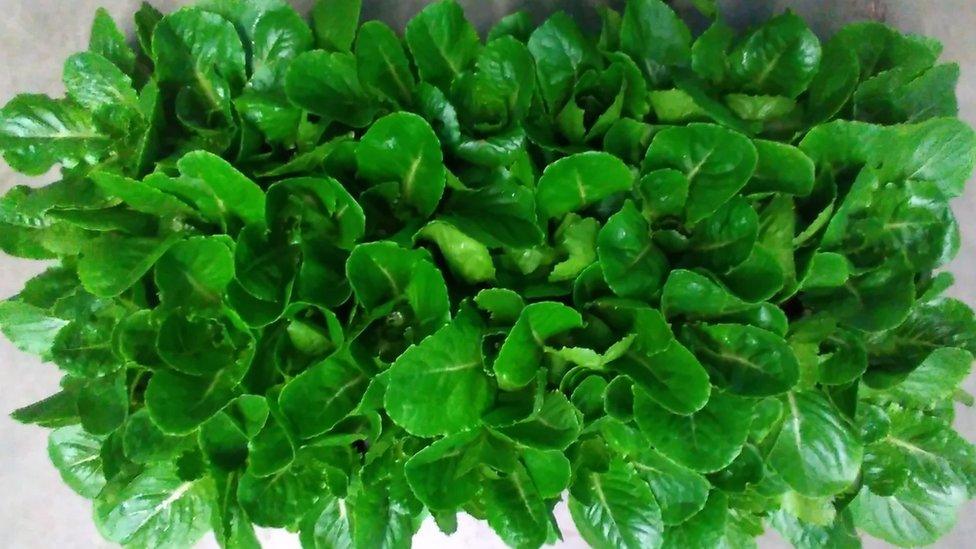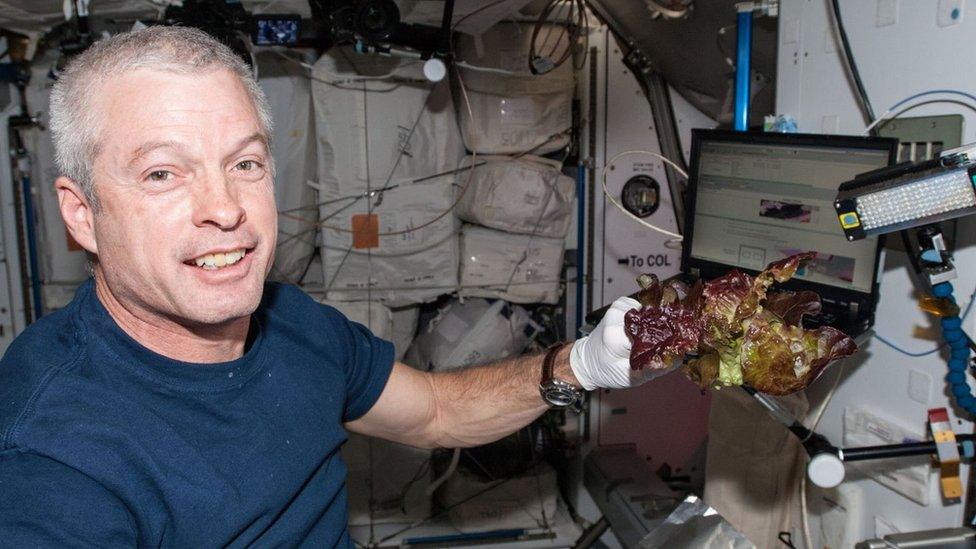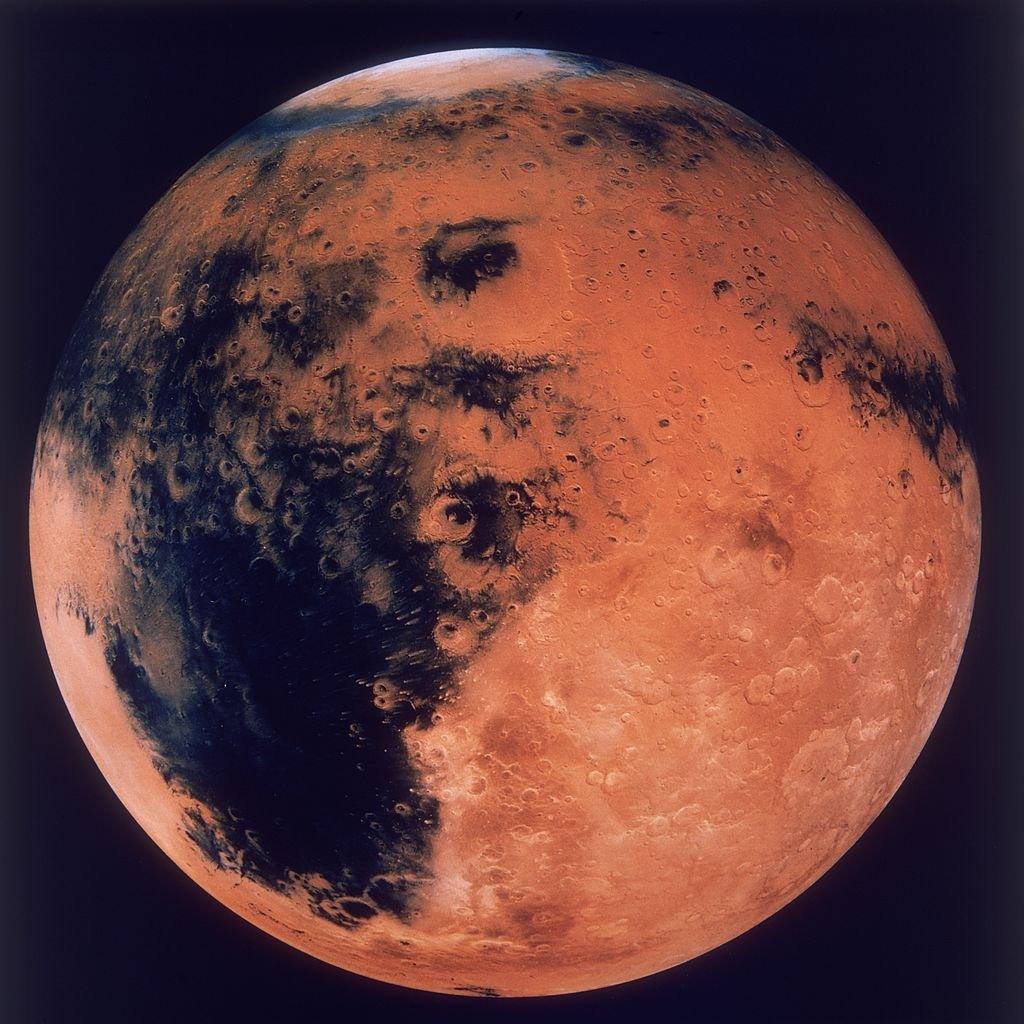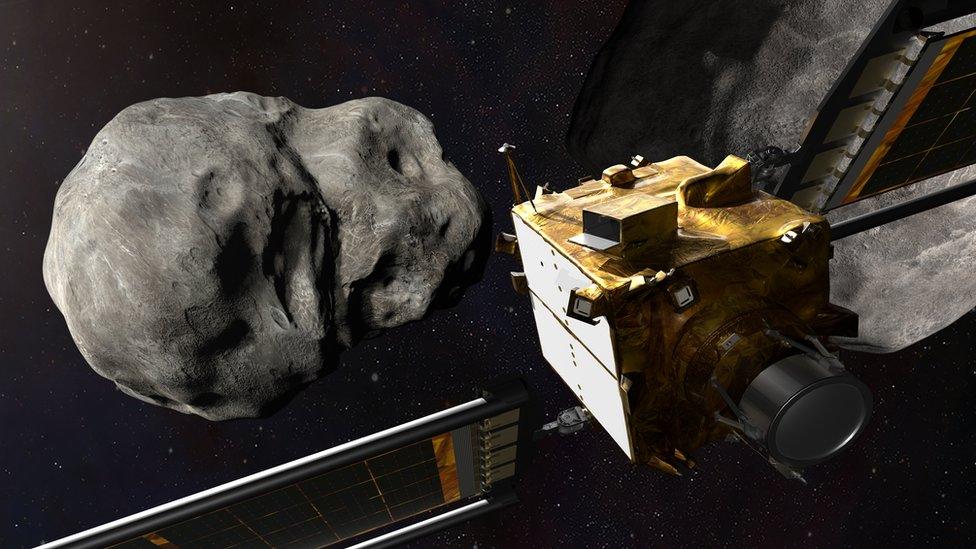How could lettuce grown in space help astronauts?
- Published
- comments

It's hoped astronauts will be able to grow the lettuce in space
Lots of exciting space missions are due to take place within the next few decades, and a group of scientists have come up with a new way to help astronauts stay in tip top condition.
They've invented a new type of lettuce which could protect astronauts against bone loss.
Space agency Nasa is currently preparing to send humans to Mars in the 2030s for the very first time. While this will be a big win in the world of space exploration, missions of this kind also mean astronauts will be spending long periods of time in environments where there is very little gravity.
This can lead to a condition known as osteopenia, when a person's bones become weaker than normal. Previous studies of astronauts who have gone on long space missions have shown they can lose around 1% of bone mass over each month that they spend in space.
The team of researchers have created lettuce which produces a bone-stimulating hormone and this could help protect space explorers.
It's hoped astronauts will one day be able to grow the lettuce in space and protect themselves against bone loss simply by eating a big bowl of salad.
"Right now, astronauts on the International Space Station have certain exercise regimens to try to maintain bone mass," says Kevin Yates, a graduate student who helped develop the lettuce.
"But they're not typically on the International Space Station for more than six months."
SpaceX
In contrast, it takes about 10 months to get to Mars, and the astronauts would remain for about a year to study the planet before making the trip back home to Earth. The length of the mission could put astronauts' physical health at risk.
A medication which helps restore bone mass in space does exist, but it requires daily injections. However, getting large quantities of the medication and syringes, and injecting astronauts every day during space missions isn't very practical.
This led the team of scientists from the University of California to find a way for astronauts to produce the hormone they'd need to maintain strong bones themselves while also enjoying some tasty greens, something which astronauts often lack on their largely canned and freeze-dried diets.

Lettuce has been successfully grown in space before, and scientists are now are hoping to produce a new type of the plant that will help protect astronauts' bones
"Astronauts can carry transgenic seeds, which are very tiny — you can have a few thousand seeds in a vial about the size of your thumb — and grow them just like regular lettuce," Somen Nandi who worked on the project said.
"They could use the plants to (make) pharmaceuticals, such as PTH, on an as-required basis and then eat the plants."
The plants the team produced have, on average, about 10-12 milligrams of the desired hormone per kilogram of fresh lettuce. This means astronauts would need to eat about 380 grams, or about eight cups of lettuce, every day to get a big enough dose, making a pretty mega salad!

The lettuce could help astronauts who are in space for long periods of time like the upcoming mission to Mars
"One thing we're doing now is screening all of these transgenic lettuce lines to find the one with the highest PTH-Fc expression," said scientist Karen McDonald.
"We've just looked at a few of them so far, and we observed that the average was 10-12 mg/kg, but we think we might be able to increase that further. The higher we can boost the expression, the smaller the amount of lettuce that needs to be consumed."
As well as upping the amount of the bone-stimulating hormone in the lettuce, the next step for the team is to test how well it grows on the International Space Station and whether it produces the same amount of the desired hormone as on Earth.
- Published10 August 2023
- Published3 March 2020
- Published6 January 2022

